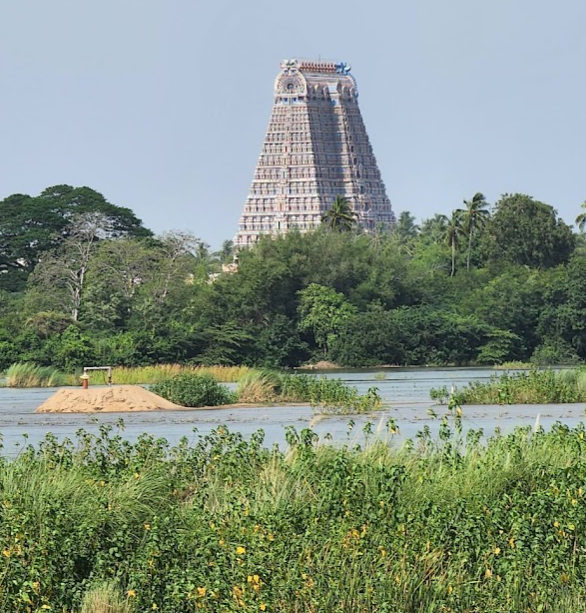
Lord Ranganathaswamy is a self-manifested form of Lord Vishnu, believed by Sri Vaishnavites to reside in Sri Vaikuntam. Lord Brahma worshipped Him for a long time and appointed the sun god, Surya, to continue worshipping in his absence. Since then, the Sun clan has worshipped the Lord. Lord Sri Ram, a member of the Sun clan, worshipped the deity. After defeating Ravana and rescuing his wife Sita, Lord Ram gave the idol of Lord Ranganathar to Vibishana. On his way back to Sri Lanka, Vibishana placed the idol down to rest, but when he tried to pick it up again, it wouldn't move. The Lord expressed his desire to stay near the Cauvery River and face south, towards Lanka.
Origin :-
The temple's origin dates back to the 1st century CE during the Sangam period. The temple as it stands today has been built over centuries, with contributions from various royal dynasties. These include the early Cholas (1st century CE), later Cholas (13th century CE), Kongu rulers, Pandyas (6th-10th and 13th-14th centuries CE), Hoysalas (10th-14th centuries CE), and the Vijayanagara Empire (16th century CE). These rulers added functional structures and pavilions, making the temple a centre of religious devotion known and praised by many religious and linguistic groups across the nation.
882670.png)
